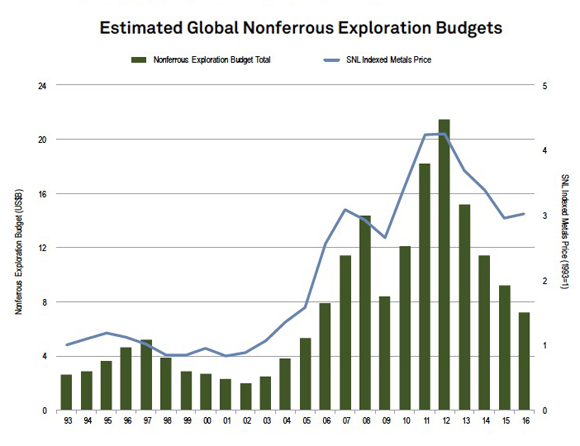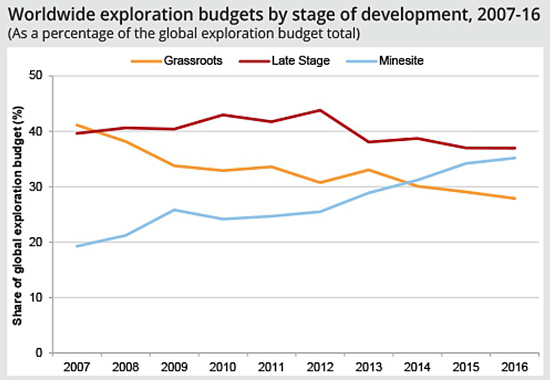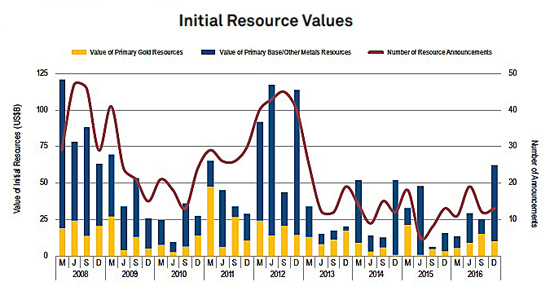Mining exploration spending drops to 11-year low
A new report by SNL Metals and Mining on Corporate Exploration Strategies in 2016 shows an industry still caught in a deep downturn after four years of sharp declines.
According to SNL, part of S&P Global Market Intelligence, 2016 exploration budgets at the 1,580 companies covered by the study totalled $6.9 billion, the lowest in 11 years.


Source: S&P Global Market Intelligence
Other measures show the extent of the damage to the sector: The average 2016 exploration budget was $4.4 million, the lowest since 2009, and the median budget was $800,000, the smallest in more than a decade.
Spending was dominated by the industry's largest companies with just the top 10 companies were responsible for over $1 of every $5 spent on exploration - mainly for copper and gold - worldwide last year.
SNL notes that "conventional wisdom holds that the major companies leave grassroots exploration to the juniors," but today early-stage exploration is being driven by the majors. The 20 biggest spenders alone contributed 34% of all greenfields allocations in 2016.


Source: S&P Global Market Intelligence
A consequence of this shift was a drop in overall spending on finding new deposits with greenfield exploration dropping to a new low of some $1.9 billion or 28% of total budgets. Minesite exploration reached a record high share of 35%, almost surpassing late stage exploration pegged at around $2.6 billion:
Historically, minesite exploration attracted the smallest share of annual exploration budgets; however, 2016 marked the third consecutive year in which companies allocated more to minesite work than to grassroots. The decline in grassroots' share of overall budgets since the 1990s corresponds with the upward trend in the shares allocated to late-stage and minesite budgets.
That constitutes a year-on-year drop of 21% and barely one-third of the record amount of spending in 2012.
Companies have spent proportionally more on late-stage projects to move them towards production or to make them attractive for acquisition, while minesite work has been perceived as a less expensive and less risky means of replacing and adding reserves.


Source: S&P Global Market Intelligence
In 2017, SNL does not expect significant shifts in budget share by stage as spending by juniors continue to shrink and larger companies increase budgets only slightly.
SNL points out that the low level of exploration at earlier-stage projects in recent years, it is no surprise that initial resource announcements have been declining.
The steep decline after the 2008-09 financial crisis has been surpassed by the low numbers of new deposits (including new zones at mines and projects with previously defined reserves or resources) announced in recent years.
Last year 55 initial resources with a value of $130.4 billion was announced, up from 44 in 2015 worth $103.2 billion. That's a healthy improvement, but pales in comparison to the 168 new deposits found in 2012 which was valued at $366.5 billion.